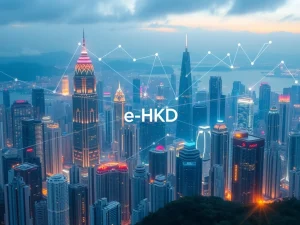Bitcoin Mining 2025: The Essential Guide to Hashrate and Rewards

Are you fascinated by the backbone of the crypto world? Bitcoin mining remains a crucial process. In 2025, the landscape has significantly evolved. Understanding Bitcoin mining 2025 is essential for any crypto enthusiast or potential participant. This guide demystifies the mechanics, challenges, and opportunities within this competitive sector.
Understanding Bitcoin Mining in 2025
Bitcoin mining forms the secure foundation of the BTC network. Miners gather pending transactions. They then bundle these into blocks. Subsequently, miners perform countless hashing attempts. Their goal is to produce a hash meeting the network’s difficulty target. The first miner finding a valid solution broadcasts their block. After network verification, that miner earns a reward. However, if another miner solves the block first, your result becomes a “stale block.” You must then restart with new transactions.
As of 2025, the block reward stands at 3.125 BTC. This figure followed the April 2024 halving. Miners also collect transaction fees. These fees change with network congestion. Competition is intense, making entry difficult. Almost all miners now utilize specialized ASIC miners. Most also join mining pools. These pools stabilize income by sharing rewards among participants.
It is a common misunderstanding that miners “solve complex puzzles.” Actually, no puzzle exists. Miners simply make trillions of guesses per second. They continue until one guess produces a hash below the network’s difficulty target.
Securing Your Mining Rewards: The Block Discovery Process
The process of finding a block is quite systematic. First, a miner constructs a candidate block. They pull pending transactions from the mempool. They also include a unique “coinbase transaction.” This transaction mints new BTC and claims transaction fees. The miner then repeatedly hashes the block’s header using SHA-256. They constantly adjust the nonce, a number used only once. Their primary objective is to find a hash value. This value must be lower than the current network difficulty target.
Upon discovering a valid block, the miner broadcasts it. The entire network receives this information. Other nodes then independently verify its proof-of-work and transactions. They add it to their local blockchain copy. Occasionally, two miners find valid blocks simultaneously. This can cause a brief split in the blockchain. The network quickly resolves this situation. One branch accumulates more proof-of-work (PoW). It then becomes the main chain. The other branch is discarded as a “stale” block. This robust system ensures Bitcoin’s consensus. It always follows the chain with the most accumulated work. Consequently, forks remain short-lived. The ledger stays incredibly resilient. Thus, the integrity of potential mining rewards is maintained.
The Impact of Bitcoin Halving on Rewards
The fourth Bitcoin halving occurred in April 2024. This event halved the block reward. It dropped from 6.25 BTC to 3.125 BTC. This fixed reward is what every miner competes for. Approximately 144 blocks are mined daily. Therefore, the network issues about 450 new BTC each day. This figure excludes transaction fees.
Transaction fees introduce an element of unpredictability. Around the April 2024 halving, Bitcoin activity surged. The launch of Runes, a new token protocol, caused this. It flooded the mempool with transactions. For a brief period, transaction fees surpassed the 3.125 BTC block reward. Some blocks yielded tens of BTC in fees alone. This represented a rare and significant windfall. However, these spikes were temporary. By mid-2025, median fees had normalized. Demand had cooled down.
This pattern is well-known. When the mempool overflows, users bid higher for block space. This happens during new protocols, hype cycles, or major on-chain events. Once the backlog clears, bidding wars subside. Fee revenue then returns to its baseline. Consequently, understanding the halving’s effect on total mining rewards is critical.
Navigating Hashrate and Difficulty in 2025
Mining power is quantified by hashrate. This represents the total computing power. It is dedicated to securing the Bitcoin network. Bitcoin maintains block times near 10 minutes. It achieves this by adjusting mining difficulty. This adjustment occurs every 2,016 blocks, roughly every two weeks. The cycle operates predictably:
- Increased Hashrate: When hashrate rises, blocks are mined faster. The network then raises difficulty.
- Decreased Hashrate: If hashrate drops, blocks take longer. The network lowers difficulty to compensate.
Higher difficulty means miners earn less BTC. They do so for the same amount of work. Each difficulty retarget acts as an “earnings report.” It resets revenue expectations for the next two weeks. In 2025, both hashrate and difficulty are at unprecedented levels. New, more efficient ASIC miners continually come online. This pushes difficulty higher. Older rigs are thus forced out of the market. Miners with high power costs face closure. They must find cheaper energy or benefit from price and fee spikes. Bitcoin mining remains a continuous race. Only the most efficient setups endure during tight margins. The 10-minute block time is a crucial design compromise. It balances quick confirmations with minimizing chain splits.
The Evolution of ASIC Miners and Cooling Solutions
Bitcoin mining prioritizes maximum efficiency. By 2025, the industry had moved past simple hobby rigs. At the heart of most modern mining farms are ASIC miners. These machines are built exclusively for Bitcoin. Their efficiency is measured in joules per terahash (J/TH). This indicates energy needed per unit of hashing power.
Miners employ various hardware and cooling strategies:
- Air-Cooled Units: These remain industry workhorses. Models like Bitmain’s S21 (17.5 J/TH) and MicroBT’s M60S (18.5 J/TH) are prevalent. High-end versions, such as the Bitmain S21 XP, reach around 13.5 J/TH.
- Hydro and Immersion Rigs: These represent the technological forefront. Models like the S21 XP Hyd rate near 12 J/TH. They offer top performance. However, they require specialized liquid-cooling systems. This adds cost and operational complexity.
Cooling is a crucial factor for large-scale mining:
- Air Cooling: It is the cheapest and easiest to deploy. However, it is noisy and less power-dense.
- Immersion Cooling: Rigs are submerged in dielectric fluid. This boosts uptime and overclocking potential. Farms like Riot’s Rockdale use this extensively.
- Hydro Cooling: Closed-loop water systems are built into machines. This offers peak efficiency. Yet, it demands significant infrastructure investment.
Fleet strategy adapts to market swings. Operators use hardware choices and firmware tuning. Underclocking reduces output but increases efficiency. This is ideal when Bitcoin’s hashprice is weak. Overclocking trades efficiency for higher throughput. Miners use this when BTC price or fees surge. The key rule in 2025 is efficiency. It matters more than raw power. This holds true unless ultra-cheap, reliable electricity is available.
Optimizing Your Earnings with Mining Pools
Today, nearly all miners direct their machines to mining pools. These pools combine hashrate from thousands of participants. Pools stabilize earnings for individual miners. Instead of waiting to personally “win” a block, miners receive consistent payouts. These payouts are based on their contributed share. Major pools like Foundry USA, AntPool, F2Pool, and ViaBTC dominate the network. Their activity is easily monitored on live dashboards. These show which pool mined the latest block.
Pools use different payout methods:
- Pay-per-share (PPS) and Full Pay-per-Share (FPPS): These offer predictable payouts. They pay for every submitted share. FPPS also includes a transaction fee estimate.
- Pay-per-Last-N-Shares (PPLNS): This method carries more risk. Rewards only come when the pool finds blocks. It offers higher variance but potentially better returns.
Your choice depends on your preference. Do you prefer steady cash flow (PPS/FPPS)? Or can you tolerate volatility for potential upside (PPLNS)?
Hashprice is a critical metric for miners. It represents USD earned per petahash of hashrate daily. Hashprice increases with Bitcoin’s price and transaction fees. However, it declines as network difficulty rises. In October 2025, the spot hashprice was around $51 per petahash per second per day. Break-even points vary greatly. They depend on machine efficiency and electricity costs. Miners with cheap or flexible power deals often survive downturns. Miners also hedge, similar to energy companies. They use hashrate forwards and fixed-payout contracts. This locks in future revenue. It helps avoid hashprice volatility.
The Crucial Role of Energy in Bitcoin Mining
Energy costs, local grid policies, and geography determine miner profitability. These factors also dictate which miners are squeezed out.
How Much Energy Does Bitcoin Mining Use?
Estimates vary widely. In May 2025, Digiconomist projected Bitcoin’s annualized electricity consumption. It was roughly 190 terawatt-hours. This compares to the yearly power use of countries like Poland or Thailand. Other estimates, including Cambridge Bitcoin Electricity Consumption Index data, place Bitcoin’s share of global electricity at about 0.8%. In the United States, government data suggests crypto mining accounts for 0.6% to 2.3% of national power demand.
Miners also act as flexible power users. In Texas, for instance, the Electric Reliability Council of Texas (ERCOT) pays miners. They power down during peak demand. Riot Platforms reported significant demand-response credits. In August 2023, these were worth 1,136 BTC. Interruptible power deals can fundamentally shift Bitcoin mining economics.
Where Are ASIC Miners Located?
China banned crypto mining in 2021. Much of the displaced capacity moved. It relocated to regions with abundant energy. Texas became a key hub. Canadian provinces with hydroelectric capacity and natural gas also attracted deployments. By 2025, public mining companies operated about 7.4 gigawatts of capacity. This spanned the US and Canada. The deciding factors are clear:
- Cheap and stable power
- Favorable regulatory terms
- Grid programs that compensate miners for curtailing power during peak demand.
These factors ensure the long-term viability of ASIC miners and large-scale operations. Despite the impact of the Bitcoin halving, strategic energy sourcing remains paramount.










